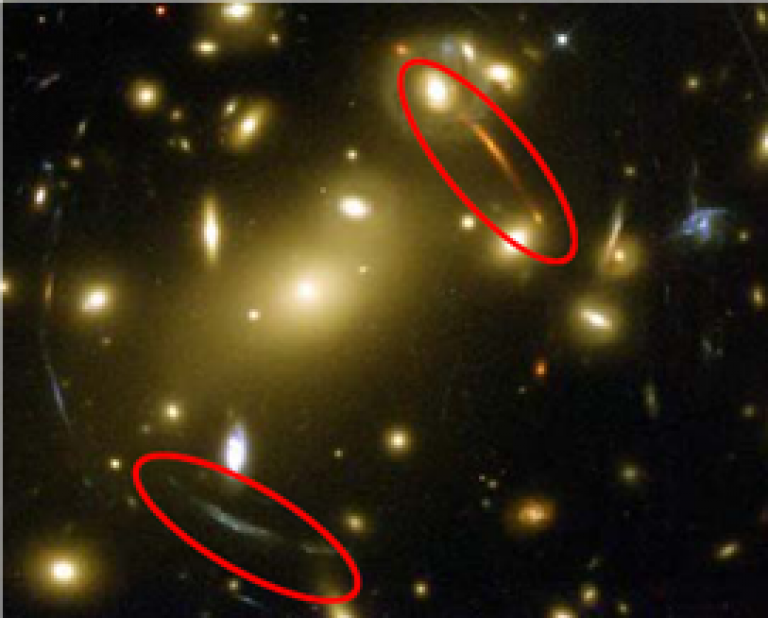Current and forthcoming surveys like KiDS, DES, LSST, and Euclid take deep images of distant galaxies over a large part of the sky. The excellent quality of these pictures allows us to measure tiny distortions in the images of galaxies, caused by "gravitational lensing", the bending of light by the gravitational pull of the matter along the line of sight between these galaxies and Earth (see figure below). Analogously, street lamps seen through a bathroom window appear distorted due to the varying thickness of the glass; by analysing the apparent shapes of the street lamps we could deduce the variations in the thickness of the glass.

Credit: HST, with red ovals added by Sarah Bridle
By measuring the distortion of millions of galaxy images, we can map the distribution of the intervening matter. Since we look back in time when observing objects further away from Earth, we can also infer the time evolution of the structures in this matter distribution. This tells us about dark matter, which is invisible but contributes to the lensing and is thus present in our matter maps, as well as dark energy, which slows down the rate of matte clumping over time. If cosmic lensing is analysed together with the information from galaxy surveys, we can even test whether Einstein's theory of general relativity is still valid on the largest scales in our Universe.
The gravitational lensing effect causes only tiny distortions on galaxy images that are small and noisy, which makes any measurement a challenge. There are several effects that can contaminate the gravitational lensing signal. The telescope and atmosphere smear and distort the images of distant galaxies, as illustrated in the figure below. One needs to estimate the distances to many millions of galaxies, which is done via photometric redshifts. Furthermore, as galaxies form they align their shapes, thereby mimicking the gravitational lensing effect. At UCL we are developing methods to combat these potential problems to unleash the full potential of gravitational lensing and help answer the biggest questions in cosmology.

Taken from the GREAT08 Handbook by Bridle et al. AOAS.
 Close
Close

